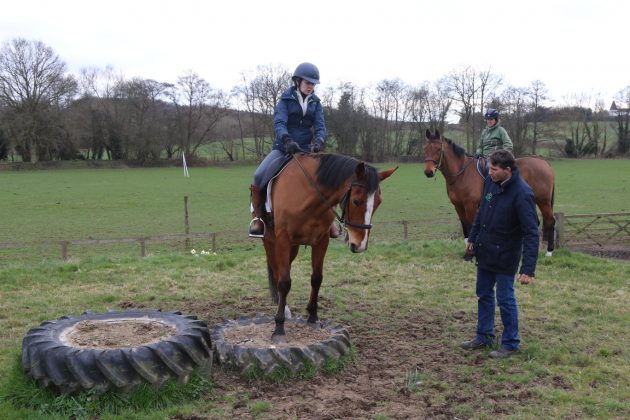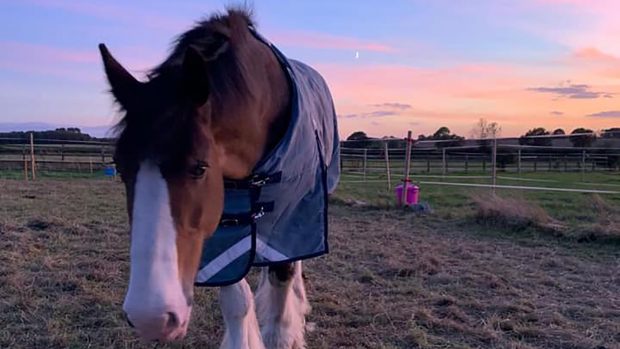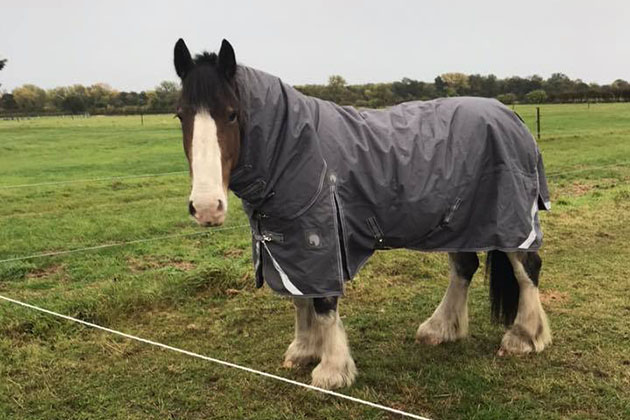Have you ever had a ‘light bulb’ moment? Every now and again I get one and last week, at about 1am when I couldn’t sleep — BAM! Another piece of the horse training puzzle popped into my head. I won’t bore you with the details, but it was to do with the length of rein to use with young horses, and having put it into practice, it is already making a difference to the youngsters on the yard in for starting.
It is amazing what these little breakthroughs can do for your peace of mind. I have been training horses for over 20 years and have started more than 1,500 young horses, but I still have times when I stay awake at night trying to work out why things may not have gone quite according to plan with a certain horse, or what I can do to improve. I started last week feeling a little stressed and frustrated; the yard is very busy, the weather is terrible, and some projects that are very important to me have been stuck on the back burner. But that light bulb moment left me clear-headed, positive and with a spring back in my step.
The week culminated in one of the best demonstrations I have done in a while at a packed coffee morning at the yard, when I worked with Otter and Sprite, a horse and a pony that have bucking issues. The best demonstrations are those that show a progression and a clear outcome, but when you are working with unknown horses, you might not always arrive at that outcome in one session, so sometimes you have to be content with explaining and demonstrating the processes involved. Horses are much like humans; when you are being taught something new, sometimes you get it straight away, and sometimes it takes a few goes for the penny to drop.
Both Otter and Sprite had been checked, and cleared, for physical issues, and had developed the bucking habit for slightly different reasons. I worked with Otter first, and felt that his behaviour came out of frustration and a lack of respect for his handler, which had resulted in his owners not being able to even put a saddle on him, let alone ride him. I went through two simple exercises with him; ‘standing on the tie’ and ‘flexing while desensitising’, which are designed to create a calm, relaxed horse that you can control whatever is going on. When it came to saddling him, I didn’t even have to hold on to him to pop the saddle on and do up the girth. I felt this was enough for Otter for the day, and it was a major breakthrough for his owners, so I moved on to the pony, Sprite, who hadn’t been ridden in a year as he had learnt to take off and buck.
I felt Sprite was bucking because there are gaps in his education and he is unconfident in what the rider is asking him. I did some groundwork in the round pen and taught him forward cues, changes of direction and a stopping cue, all of which included a voice command. While I was doing this, I realised he was very one sided and wouldn’t let me in his right eye. Once this was remedied, he started to settle and after some desensitising work, I hopped on and gave him a ride without incident. I am sure there were a few people who wanted to watch a rodeo show, but Sprite was calm and happy. I didn’t ask for a canter for this ride, because he wasn’t established enough with the canter cue on the ground, but this is what I would work towards if I had another session with him.

My riders heading out on a hack from camp
As we have moved into spring, I, like everyone else, have been willing the better weather to arrive. With so many events being cancelled, we were lucky to hit a couple of decent days for our two-day Your Horsemanship hacking camp. I had a great two days with riders who had not ridden out for years, mainly through fear of what their horses would do on the roads.
Before hitting the fields and roads, I taught the riders to have a plan, which is the most important thing to have in order to alleviate those ‘what if’s?’ that get into your head. As horses are flight animals, I gave them tools to deal with flight situations if they arose, which gave the riders the confidence that they would be able to keep their horse under control and quickly settle them back down.
Like this? You might also enjoy reading these:
Jason Webb’s blog: an exciting development for 2018
I also got them riding forward over various obstacles (pictured below), in order to build the trust between horse and rider. The two days culminated in a lovely group hack down the road to a friend’s stables, where we tied the horses up and had a picnic, before heading home without incident. Hopefully our spring Your Horsemanship camps will be just as enjoyable.

Fingers crossed that the worst of the weather is over, and we can all get out and about with our horses again. I can’t believe it is only three weeks until Badminton, and for me personally, a month before my first polocrosse tournament of the season… I’m hoping that my hairy monsters currently in the field miraculously turn into the sleek, athletic playing machines that I know they can be! I’ll leave you with a photo of the gorgeous Jay, a stunning Friesian gelding we are starting at the moment. It was taken as we were on a hack round the farm, when I took the opportunity to clear up a bit of haylage wrappings on the way! (Pictured top).
Jason



